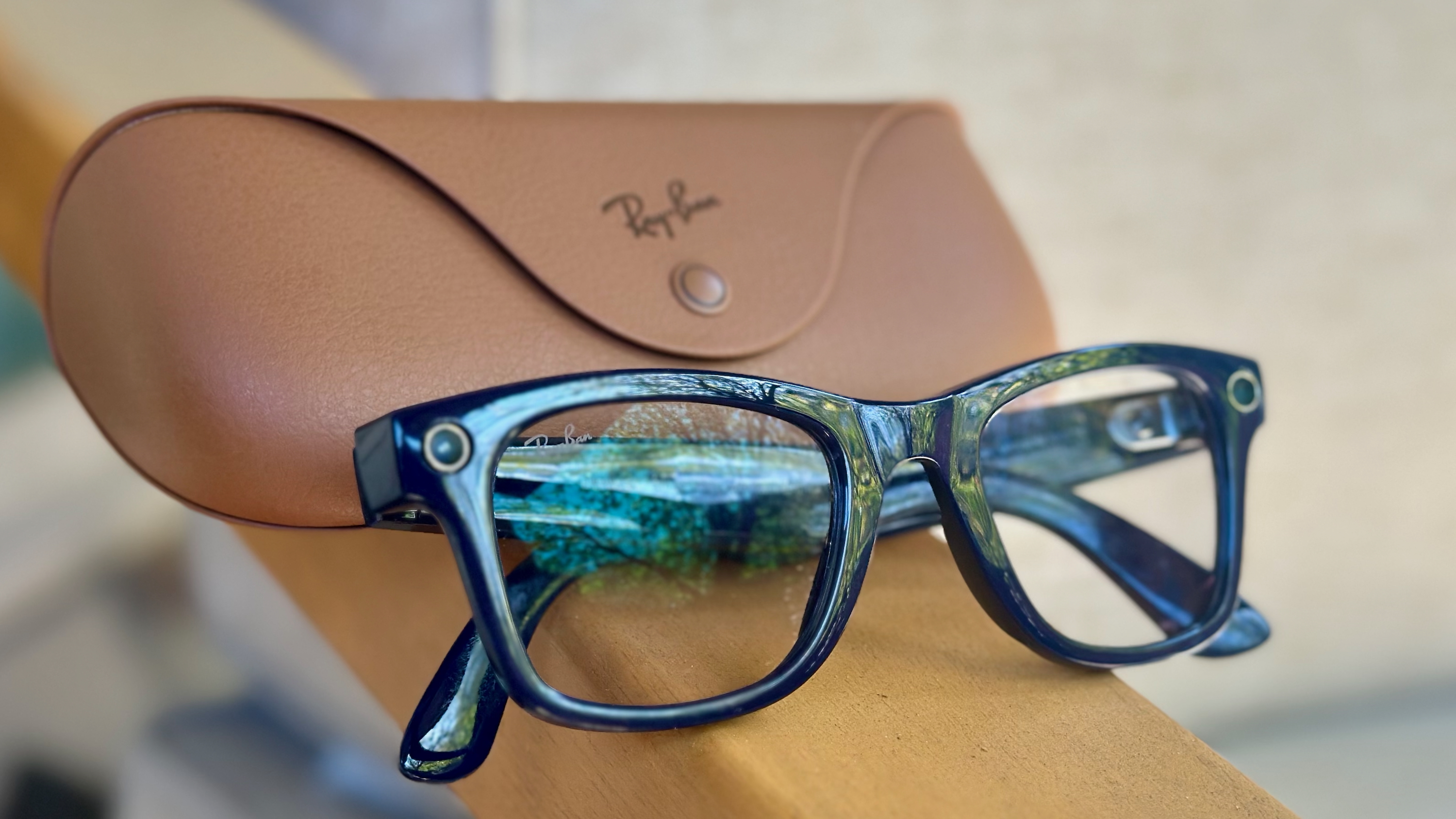Nanoleaf vs Govee: Which smart home ecosystem is right for you?
Painting your walls, rooms, and TV in light is easier than ever with Govee and Nanoleaf.
Nanoleaf vs. Govee: Colors and shapes galore

Full integration
Nanoleaf is widely known for its innovative lighting panels that provide unique illumination to any room they are in. But Nanoleaf also offers bulbs and light strips that work in unison with any other product in its catalog. It's how these devices integrate with a first-class app experience that makes them so compelling.
Pros
- Lighting panels offer excellent color gradation
- Wide range of wall panel light options
- Works with multiple digital assistants
- Companion app is full of options
- Thread compatible
Cons
- Pricey
- Fewer lighting fixture options
- Video syncing is limited
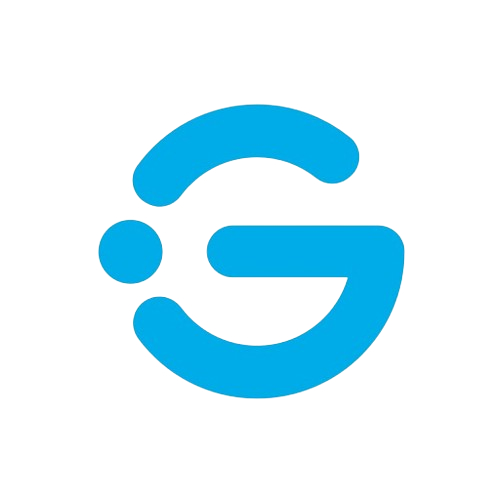
Govee has an expansive portfolio of smart lighting products that range from bulbs to lamps and lighting panels to light strips. Its comprehensive customization options through the Govee app allows you to create the perfect lighting for any situation.
Pros
- Tons of lights in the ecosystem
- Excellent companion app with lots of options
- Color gradation is great
- Compatible with popular digital assistants
- Easy video sync options
Cons
- Not Thread compatible
- Fewer accessories
- Can't set lighting scenes via voice assistant
Smart lighting has really changed a lot in the past few years. For the longest time, basic light bulbs and maybe a light strip were about all that we could get. Then came a new breed of products that took the versatility of LEDs and crafted unique lighting devices and services to go with them.
Nanoleaf is well-known for its lighting panels that you mount to a wall. The company has grown beyond its original triangular-shaped panels to release several other shapes and more common bulbs and light strips. Govee is another company that pushes the boundaries of what smart lights can do with its unique fixtures.
Picking between Nanoleaf and Govee for your home can be difficult. So, we're here to help with the decision.
For many tech fans, the original 2013 Nanoleaf Aurora was an exciting breakthrough in what smart LED lights could be. Nanoleaf took that excitement and built off it by expanding on the device's capabilities and creating new products. That excitement and innovation helped spur other brands to offer up their takes on smart home lighting — one of which is Govee.
Govee quickly made a name for itself by offering feature-rich products at an affordable price. It also wasted no time expanding its ecosystem of products and pairing them with an app that brings a ton of customization options.
Both Govee and Nanoleaf come to the smart home table with plenty of similarities and a lot going for each brand, but there are some areas of separation. Let's get into what these two impressive smart lighting companies offer.
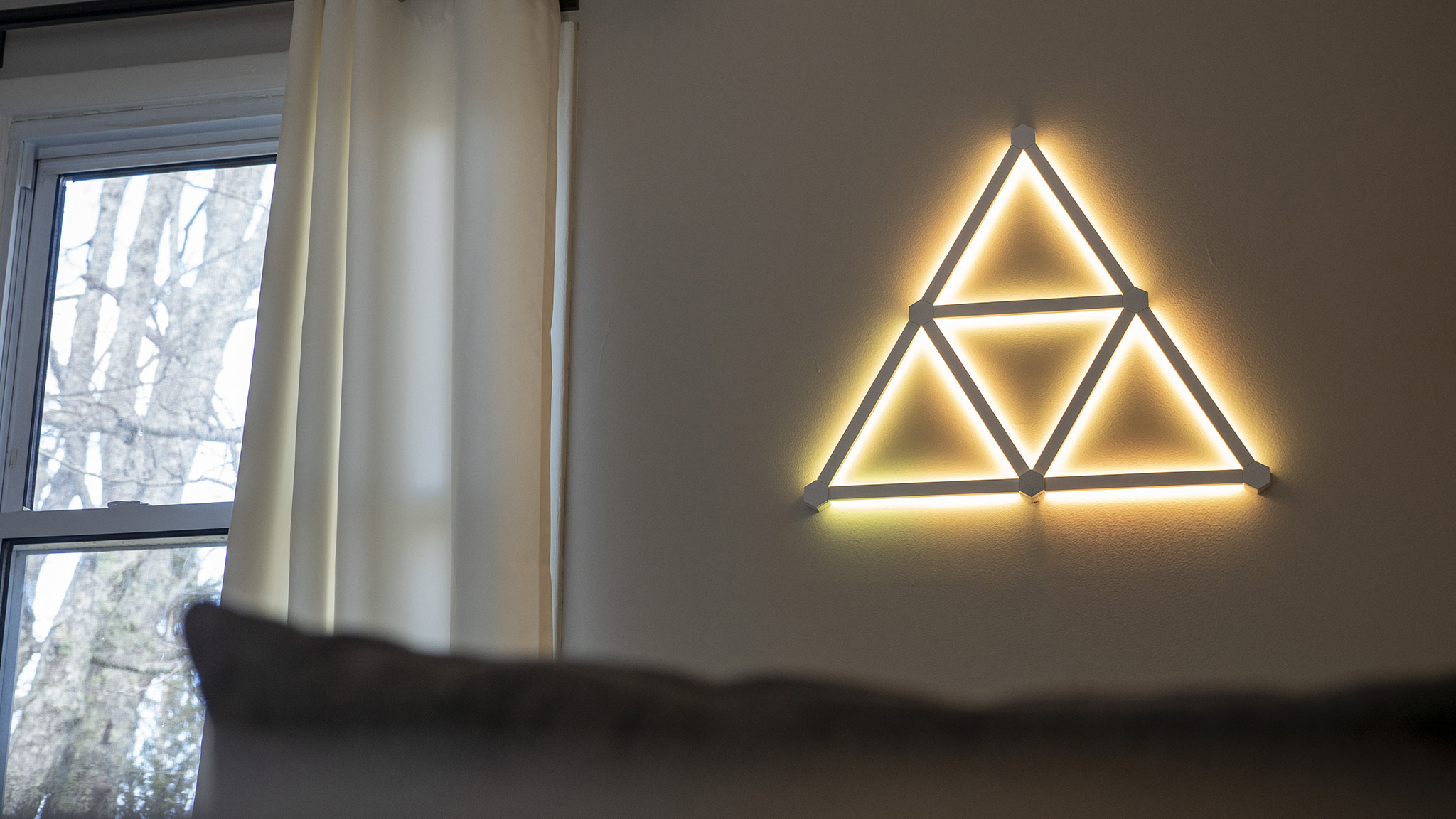
Firstly, nothing is boring about either Nanoleaf or Govee's lighting capabilities. Both offer smart lights capable of producing an entire rainbow of vivid, saturated colors. Because these are smart lights, users have complete control over the fixtures' saturation, brightness, hue, and power state using the companion apps.
Get the latest news from Android Central, your trusted companion in the world of Android
The first time I experienced Nanoleaf's light panels, I remember being enamored by the richness of the colors but perhaps even more by the way each color seemed to perfectly transition to the next, almost like there was flowing water inside the panel. I had grown accustomed to seeing the moment an LED changed from a blue to a green with pixelated-like movement, and Nanoleaf offered more.
The flow of colors from one to another is memorizing, and I can just watch them for hours.
I had a similar experience when I reviewed the Govee Lyra Corner Lamp. The Lyra gave me the same vibrant colors with fluid transitions that reflected off of the wall. While talking about the colors and how they move may not seem like an ecosystem point, it's good to know that there are a bunch of smart lighting brands with color-changing lights, but few offer the level of quality Nanoleaf and Govee do.

So, we've established that both brands have excellent lighting quality, which we expect from some of the best smart lights on the market. Both also have a variety of lighting fixtures with different strengths. Also, you may have noticed that I keep saying lighting fixtures. This is because while Govee and Nanoleaf each sell light strips and bulbs, it's the other products that come in other shapes and sizes that really fill out their portfolios.
Nanoleaf has long been the de facto smart light brand for wall-mountable panels, making some of the best smart lights for gaming. The company has hexagons and triangles in different sizes, squares, and lines that are all controllable via the app or voice with Google Assistant, Alexa, or Siri. Some models are touch-sensitive, so you can control them with swipes and taps. You can even play some games like Whack-A-Mole on them, which my kids love playing on our Nanoleaf Canvas.
Nanoleaf's Essentials line brought back more traditional LED light strips and bulbs to the brand. Nanoleaf did offer standard bulbs years back but shifted to innovating its light panels to bring an updated bulb back into the lineup in 2020.
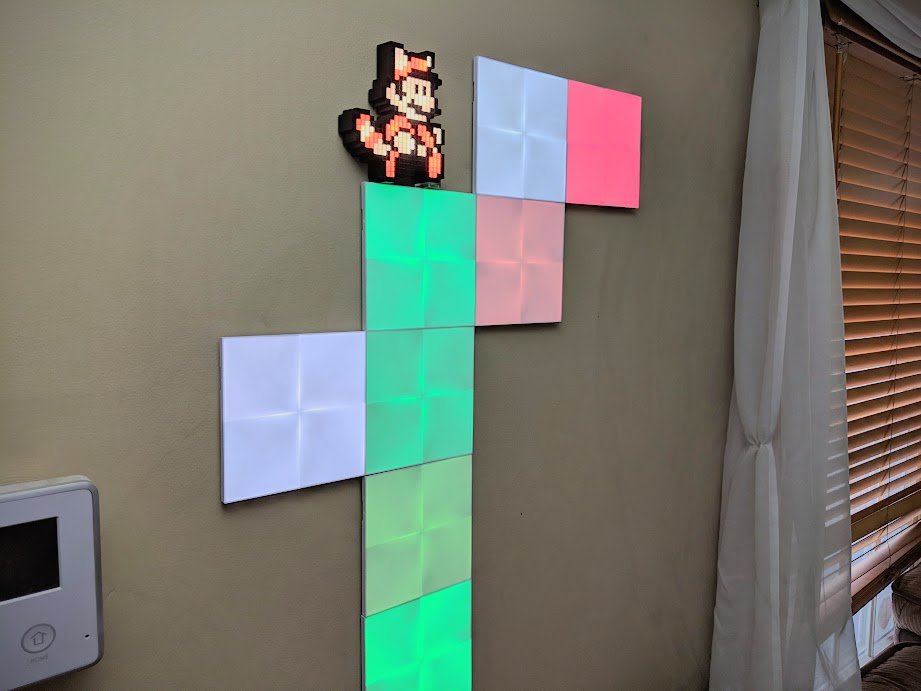
Govee, on the other hand, has only recently gotten into wall-hanging light fixtures with the Glide Wall Light, Glide Triangles, and Glide Hex. Before, the brand innovated in other smart lighting categories like tabletop lamps, ambient TV lighting, floor lamps, and other unique implementations of LEDs. Govee really made an impact with the Immersion TV Lights, a lighting solution that reacts to what's on your TV.
Unlike the Philips Hue Sync Box, Govee uses a camera that looks at the TV screen and sends the images it sees to a control box, which then relays the info to an RGBIC light strip to mimic the colors and brightness of the scene onto your wall. Creating an impressive show of light and colors, the Immersion TV Lights make nearly anything you watch become even more engaging. I've gotten to the point where I don't like watching TV without them.
Govee's Hex wall panels offer a similar experience to that of Nanoleaf's, but as of today, it's the only light panel in the company's portfolio. So, if you're looking for flat wall lighting options, Nanoleaf will have more for you to choose from. If it's standalone fixtures or entertainment lighting that's on your list, go for Govee.
Nanoleaf vs. Govee: Far more than just on and off
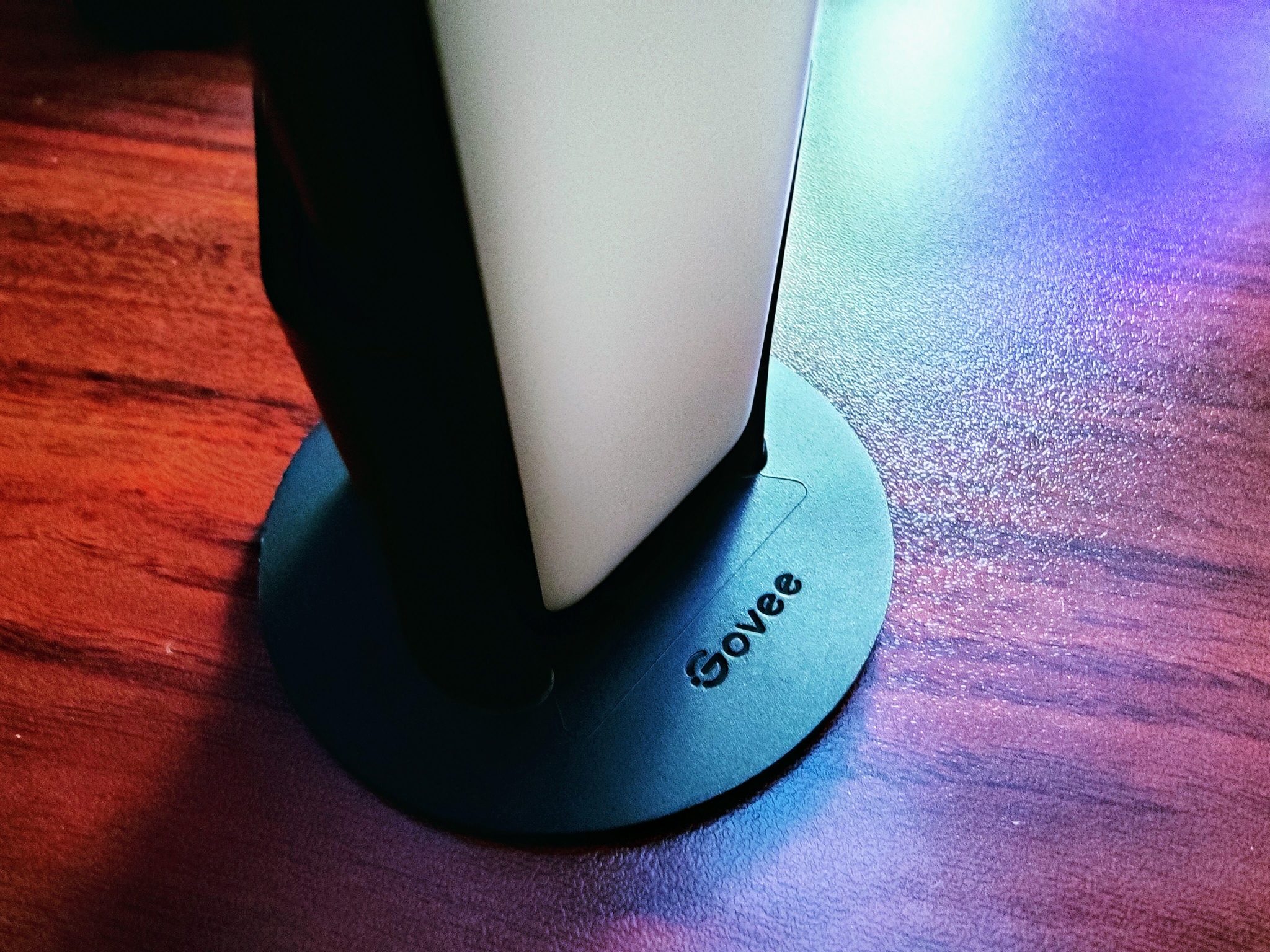
When choosing smart lights, there are a lot of choices, but it comes down to more than just how good the hardware is. Govee and Nanoleaf both have excellent hardware and light reproduction, so we need to talk about smart features. I'm talking about integration with Govee or Nanoleaf lights, options for customizing the lighting, the apps, and more.
The apps for both Nanoleaf and Govee do a great job of getting your lights connected and set up. When setting up something like Nanoleaf's panels or the Govee Hex lights, figuring out a pattern to arrange 9+ fixtures can be daunting. Thankfully, both apps help by offering preset options or allowing you to create your own layout. The Nanoleaf app even has an option to let you see how your configuration will look on your wall with augmented reality.
Both apps provide a host of seemingly endless options. Choosing from a rainbow of colors, you can add illusions of movement and so much more. But where these lights really shine are in the scenes.
One of the best parts of smart lights is applying a scene to a group of lights for the perfect lighting for any situation.
A basic lighting scene assigns preset colors to a group of lights. So if you have bulbs in a group and choose a scene that is for the 4th of July, as an example, the lights will be split up into red, white, and blue colors. When applying the same scene to a light fixture capable of displaying multiple colors simultaneously, all of the colors will show up at once.
Dynamic scenes take the concept of basic scenes and add movement. Depending on the theme, the light and colors may simply go back and forth or up and down. But these scenes can be more complex, too. Some will give the impression of a sunset with the lights slowly getting dimmer and shifting through yellow, orange, and red colors. Other scenes will look more like a nightclub, with pulsing lights and more vibrant colors.
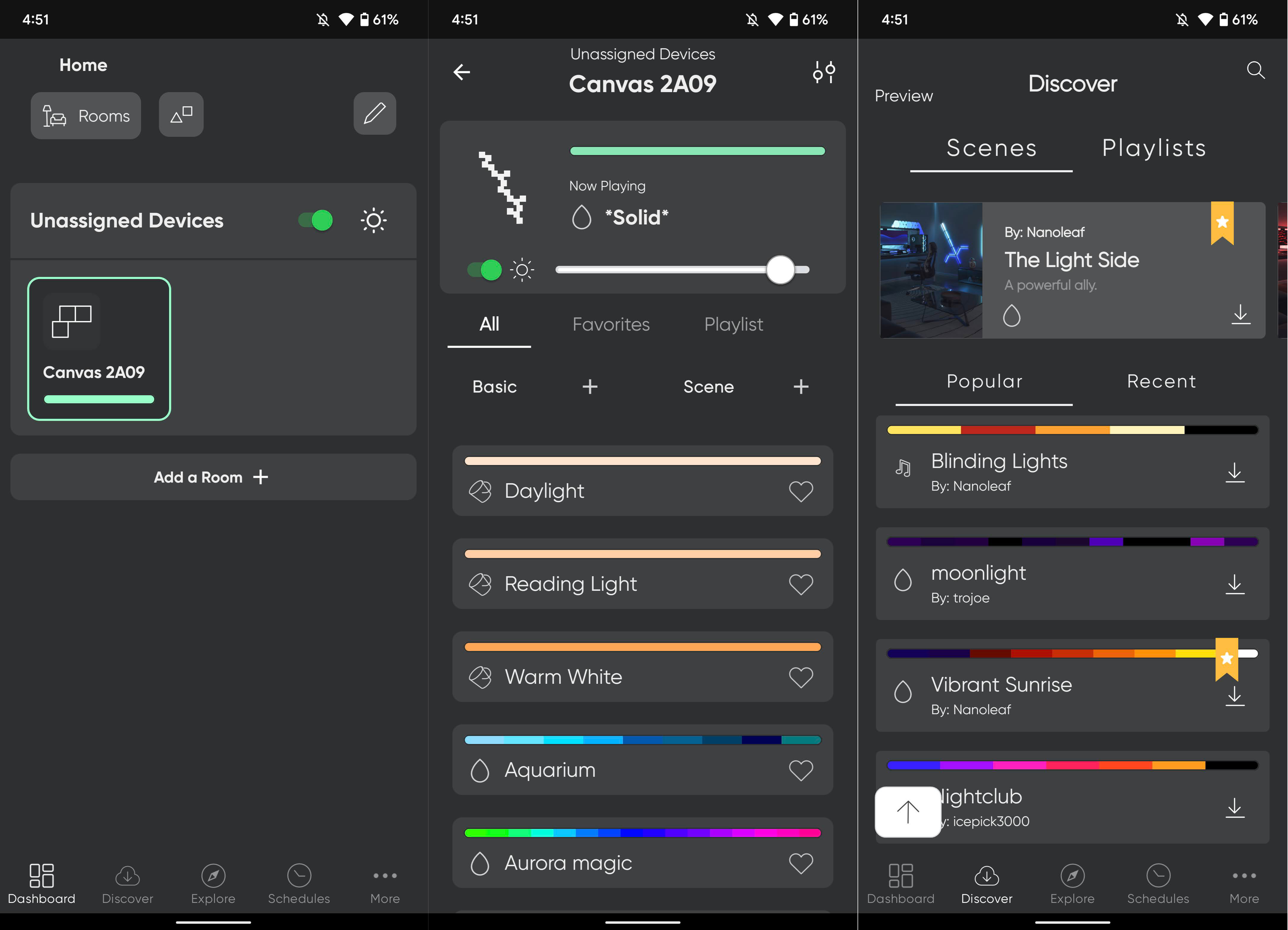
The Nanoleaf app lets you create both basic and dynamic scenes where you can select the colors that best suit your panels' layout. There's also the ability to set how the light and colors move across the panels, allowing you to invent the perfect lighting for any situation. You can then group lights and apply a scene to them all at once.
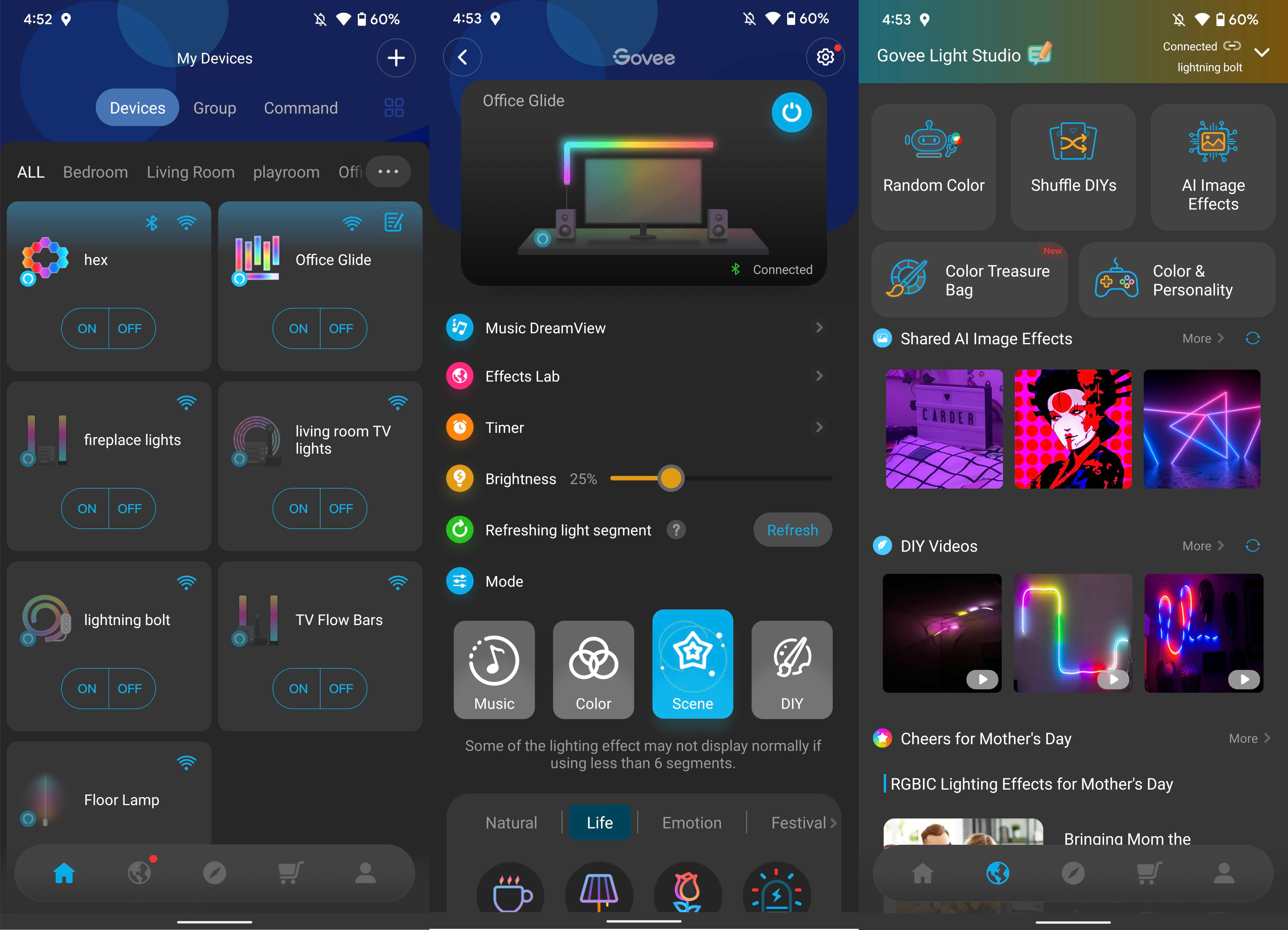
Govee offers similar features that allow for scene creation, the grouping of lights, preset scenes, and more. In fact, Govee has so many customization options in the app that it can get overwhelming if you were to go through all of the choices. But, for all that is possible in the Govee app, it does a good job of keeping things as organized as possible.
A fun feature that both brands offer is sharing scenes that you create and finding ones that others make. There are a lot of imaginative folks out there using these amazing lighting fixtures to create impressive effects that are available to use on your lights with just a tap, and that's just plain cool.
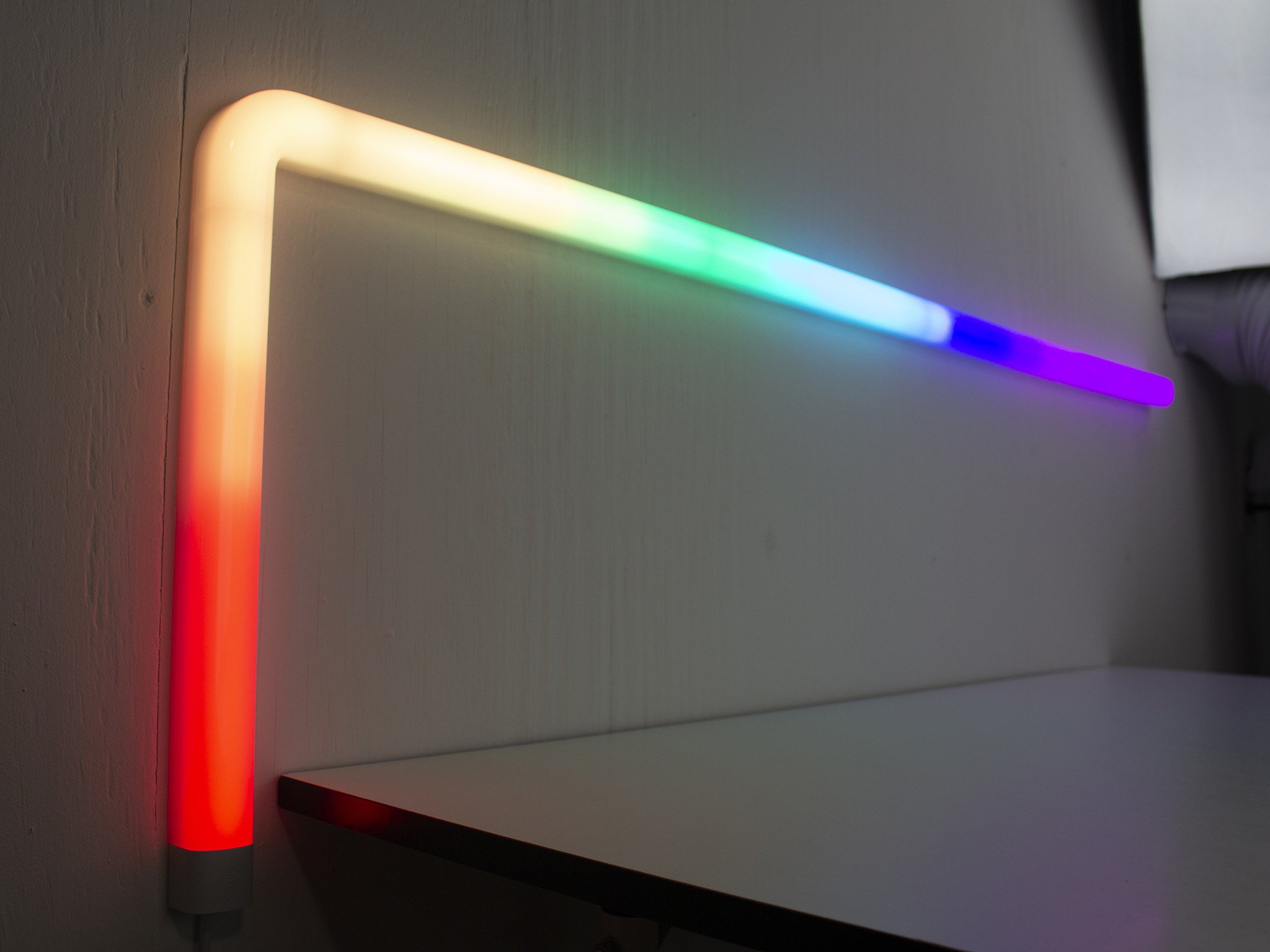
Another essential part of the smart light puzzle is voice control. Both Nanoleaf and Govee are compatible with Google Assistant and Amazon Alexa, so you can integrate these lights with ones from other brands you may have and control them all in a single app or with your voice. The control options differ, however.
Nanoleaf vs. Govee: Some key differences
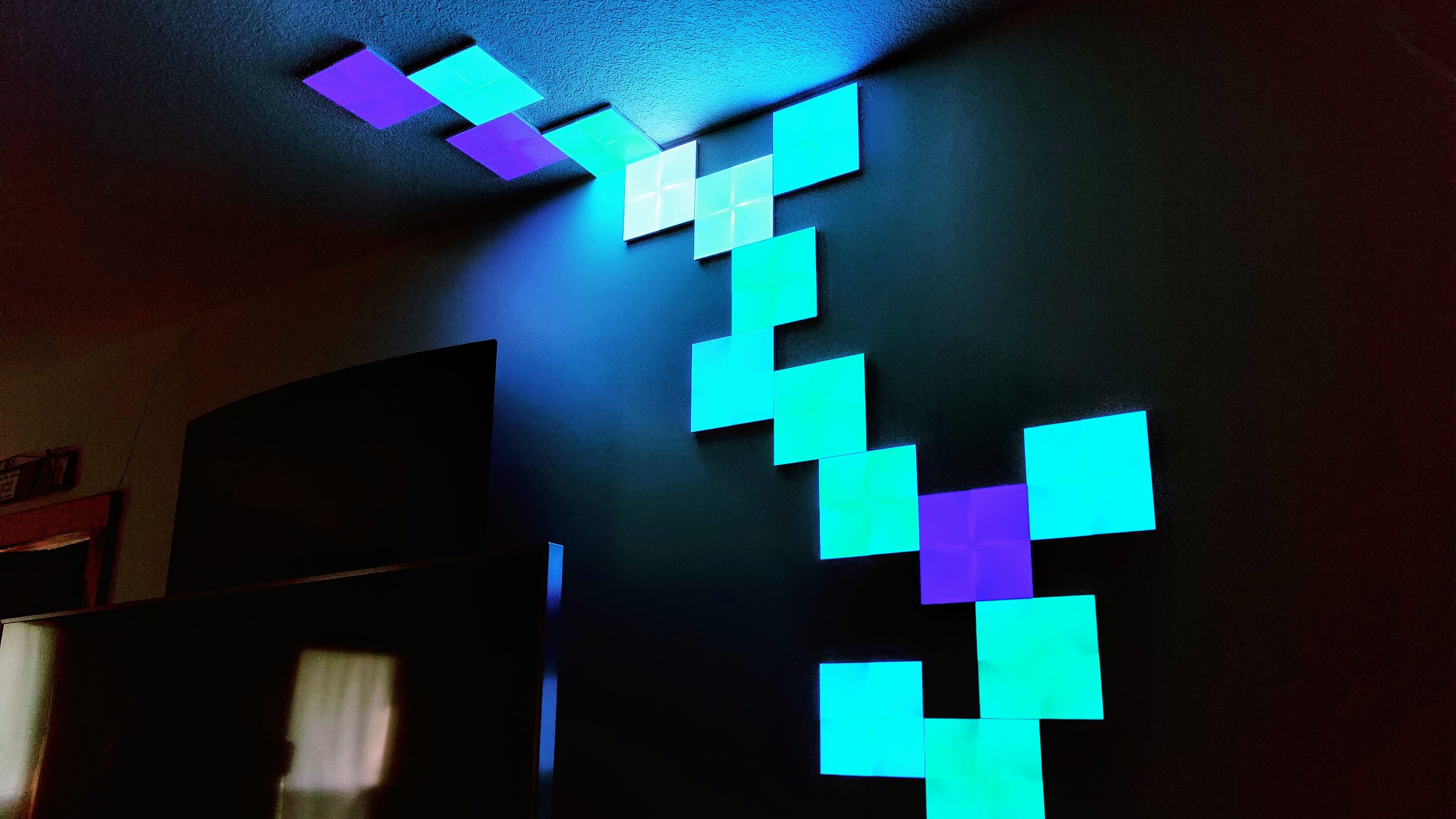
Nanoleaf and Govee have plenty of obvious similarities, but the differences between how they operate aren't easy to spot. So let's start with an easy one: their product catalogs.
As mentioned before, Govee generally has more lighting products than Nanoleaf. Govee has more than one option to choose from in just about every category. For example, it offers three different light bulbs, 11 indoor LED light strips, six smart lamps — the list goes on. Each available light has different features so you can find the one that best fits your needs.
Govee's ecosystem offers more lighting options in more form factors and covers a wider range of needs.
Nanoleaf, on the other hand, has a much smaller portfolio. It'll provide more choices in lighting panels for your wall, but you won't be able to find a dedicated smart floor lamp. You can pick up a Nanoleaf Essential bulb or strip and put it in a lamp, but there aren't any lamps designed by the company available for purchase.
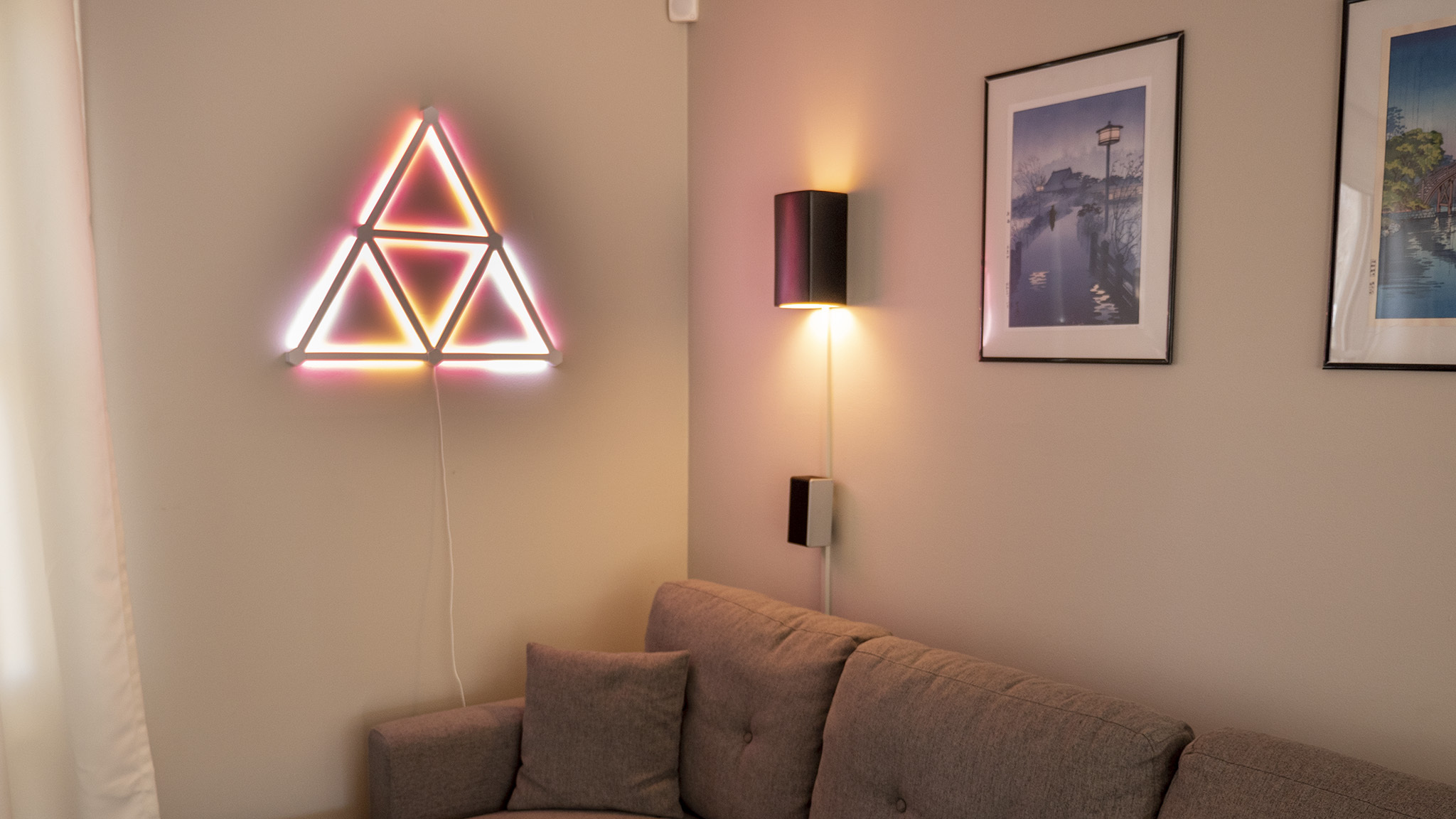
Another essential part of smart lighting is connectivity. Both Nanoleaf and Govee have products compatible with the best Wi-Fi routers, but each also offers an alternative connection method. Nanoleaf has opted to include Thread and the upcoming Matter protocols in its products.
Govee uses Bluetooth as another method for controlling your lights, which means that if your Wi-Fi is out, you'll still have control. It also allows for the devices to "see each other" and can mean better interconnectivity. However, Bluetooth can be a bit finicky and is limited in what is possible for smart home device control.
Nanoleaf chose to look to the future for its Wi-Fi alternative when connecting and controlling its devices.
Nanoleaf's choice not to use Bluetooth limits options for controlling devices should the internet be out, but down the line, Thread and (hopefully) Matter will allow for better overall connectivity than Bluetooth. Thread is available right now for the Nanoleaf lights, but it isn't a protocol that is widely used at the moment. The company did partner with Amazon's Eero to expand the Thread ecosystem, so it isn't for lack of effort.
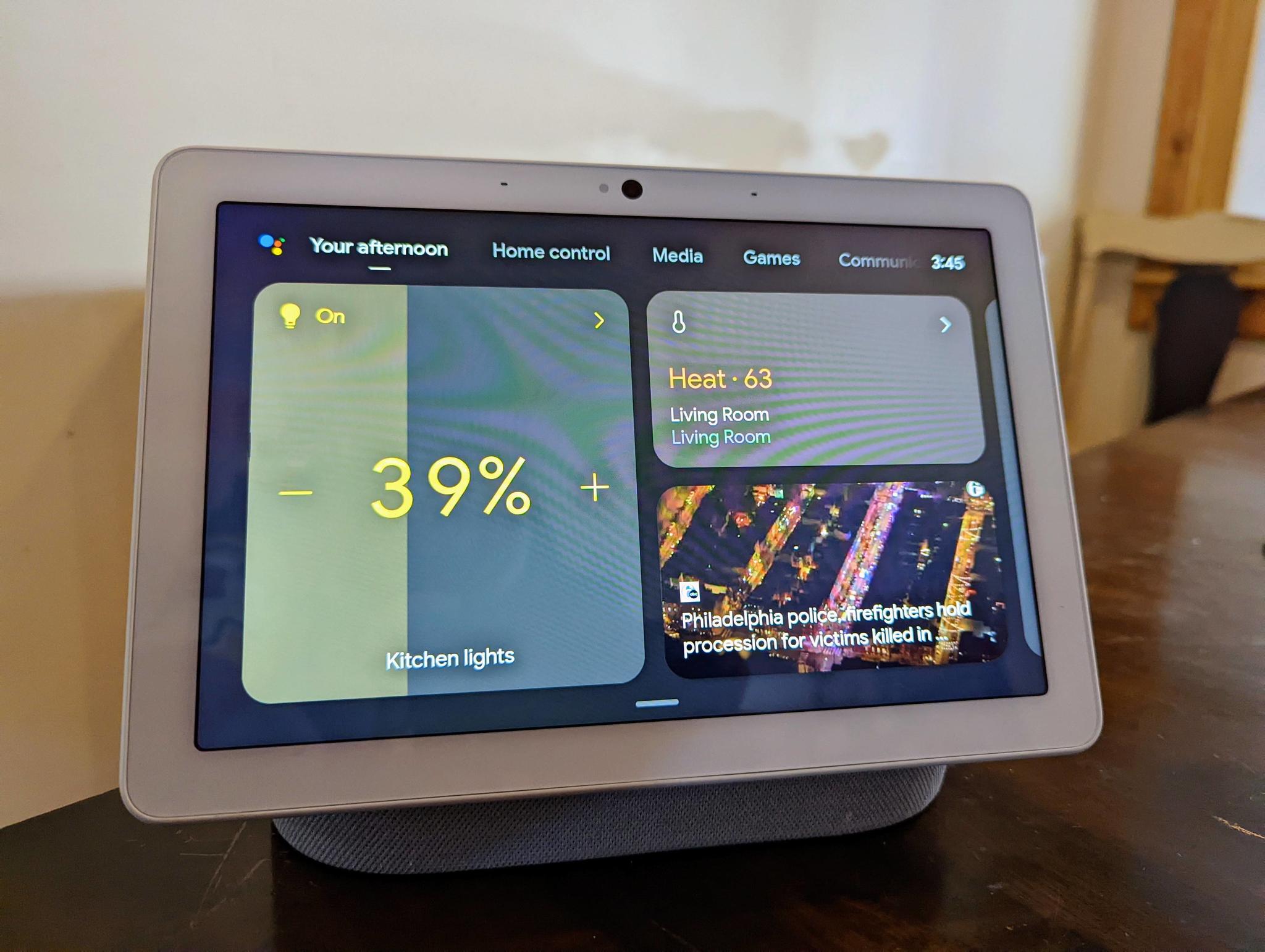
While on the subject of light control, assistant integration isn't straightforward. Using your voice or the digital assistant's app, you can change the power state of the light, brightness, and color for Govee and Nanoleaf — but controlling scenes is a different story.
Nanoleaf's integration allows you to ask for specific scenes available in the Nanoleaf app using your voice. You can also include scenes in a routine to automatically come on based on criteria you set — like time of day or motion. These options are available for both Google Assistant and Amazon Alexa. However, only Amazon Alexa integrates with Govee's scenes, allowing you to pick them manually in the Alexa app or by voice.
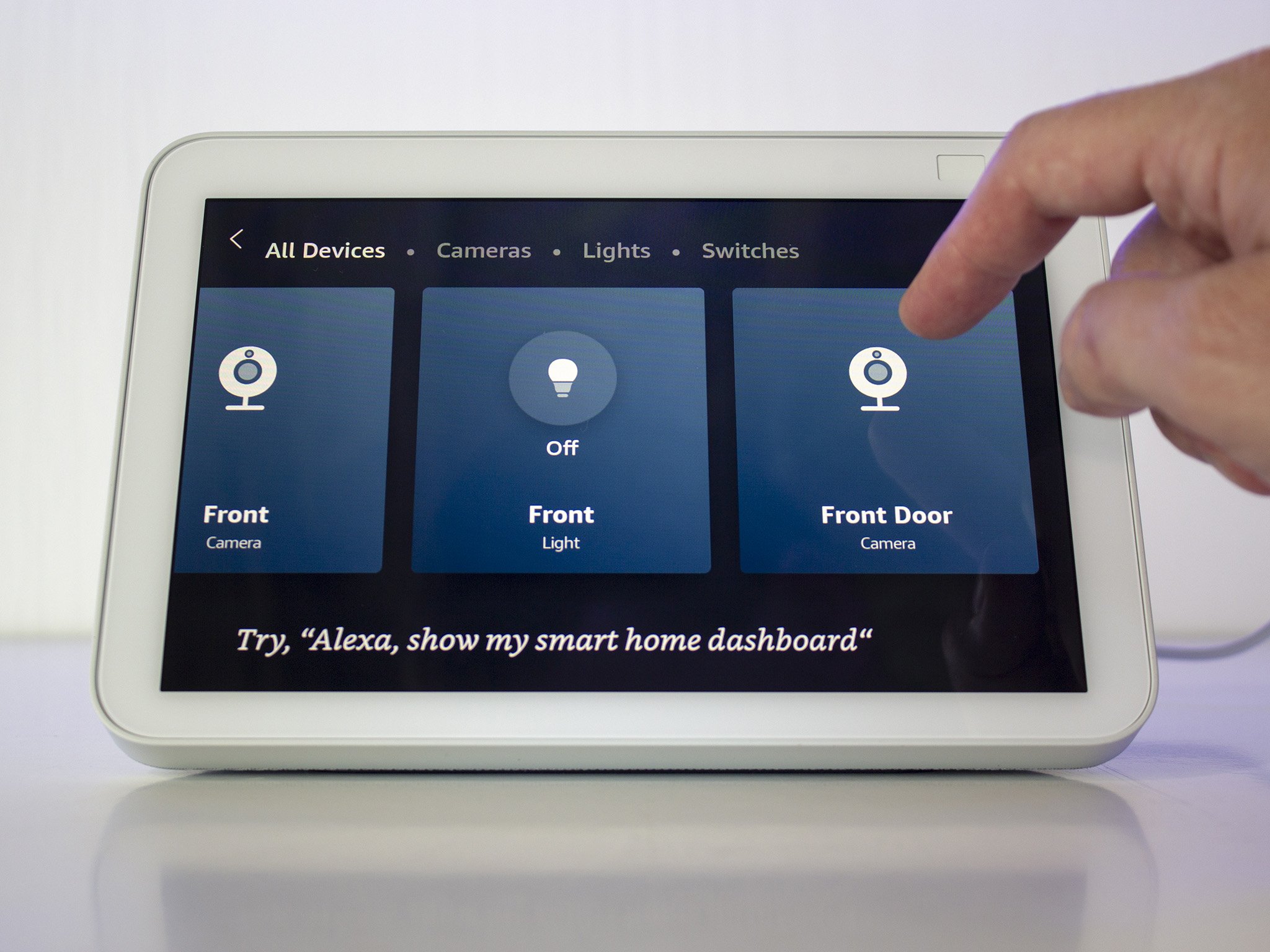
If you're interested in syncing your lights to what is happening on your TV, Govee will be the easiest option. To use either the Immersion LED Light Strip or the Flow Bars Pro, all the lights need to mimic what's happening on the screen. Because the lights use a camera to view the screen rather than requiring an HDMI box to interpret the signal, it's easier to set up — and less expensive.
Govee has a kindred product for gaming on computers. The DreamView T1 Pro uses a similar setup with a camera working with an LED strip and light bars to extend what's happening on the screen.
Nanoleaf has a product called Screen Mirror that will offer a similar experience for its lighting products, but the software has to be installed on a computer. Then, you'll need to connect your device to the program and choose what it will sync with. You can select your computer monitor easily, but if you want to mimic your TV, you'll need to connect the computer to the TV and play the video through the computer. It's not a very simple process for many people.
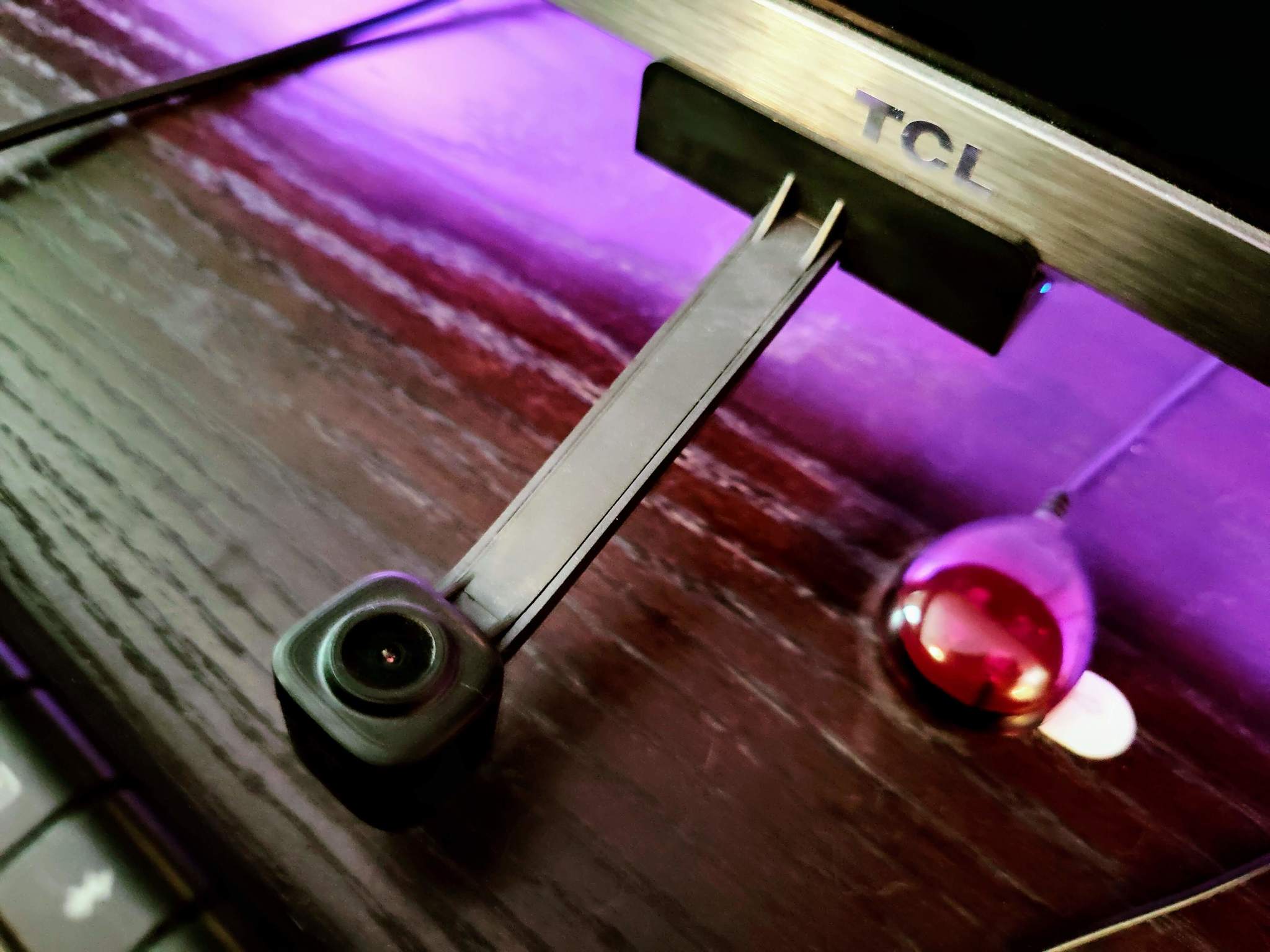
Lastly, the other major difference between Nanoleaf and Govee is the cost. There's no getting around it; Nanoleaf products are pricey, but they work very well and have some impressive features. The inclusion of Thread and the upcoming Matter standards help to future-proof the platform. However, if you want to outfit multiple rooms or create some of the large and impressive lighting setups that Nanoleaf shows off, it will get expensive fast.
Govee's lights, on the other hand, are far more affordable. From both a product and price angle, it'll be much easier to add multiple lights to your setup. A downside is that if you want Govee lighting panels for your walls, you'll be limited on choice since those products don't support Thread or Matter.
Nanoleaf vs. Govee: Which to pick?
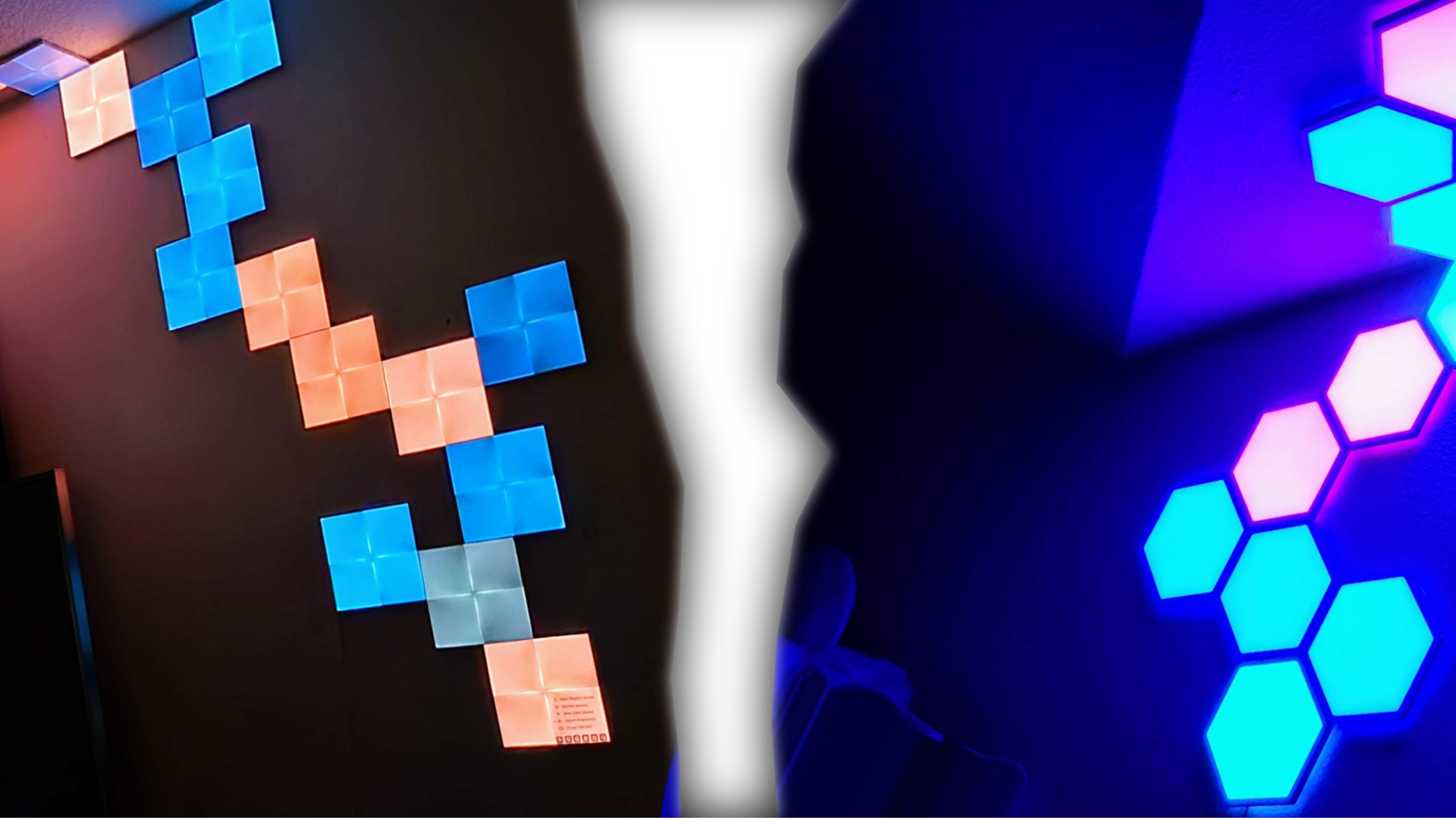
Deciding between Govee and Nanoleaf can be a tough one depending on what your goals and needs are. If you're trying to make as many lights in your home smart and only need regular bulbs and light strips, either brand will do.
If you want more options for lighting panels for your walls, go with Nanoleaf. Govee can help some in that category too, but its real strength is in categories Nanoleaf neglects, like floor and desk lamps and wider compatibility for its video syncing lights.
The other questions you'll need to answer are how much you're willing to spend and how much voice control you want. You'll be able to get more lights in your home with Govee, along with different fixture options to pick from. Nanoleaf will allow for more lighting controls using voice with the ability to call for specific scenes, but it'll get expensive much faster. Whichever ecosystem you decide works best for you, you'll get rich lighting anywhere you put it.
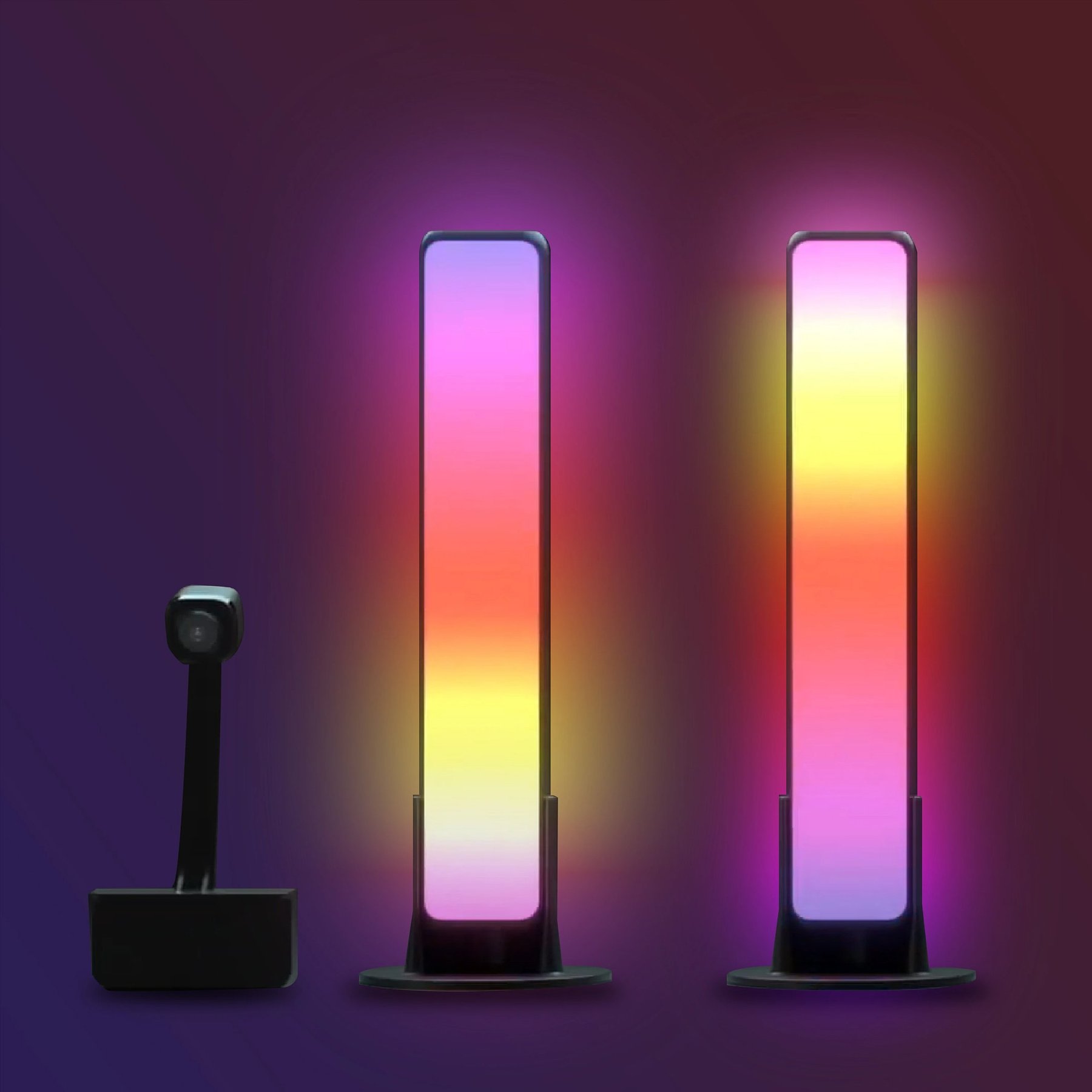
Govee Flow Pro light bars are one of the easiest ways to bring deeper immersion to your TV watching experience. These are also great for adding ambient lighting to your living room with endless options in the Govee app.
Pros
- Easy setup
- The companion app is full of options
- The ColorSense camera creates an immersive TV experience
- Excellent color vibrance and saturation
- Cheaper than many other options
Cons
- Color gradients aren't as evident due to the light bar size
- Camera can take away from the aesthetics of your TV
- Light bars are too small for large televisions
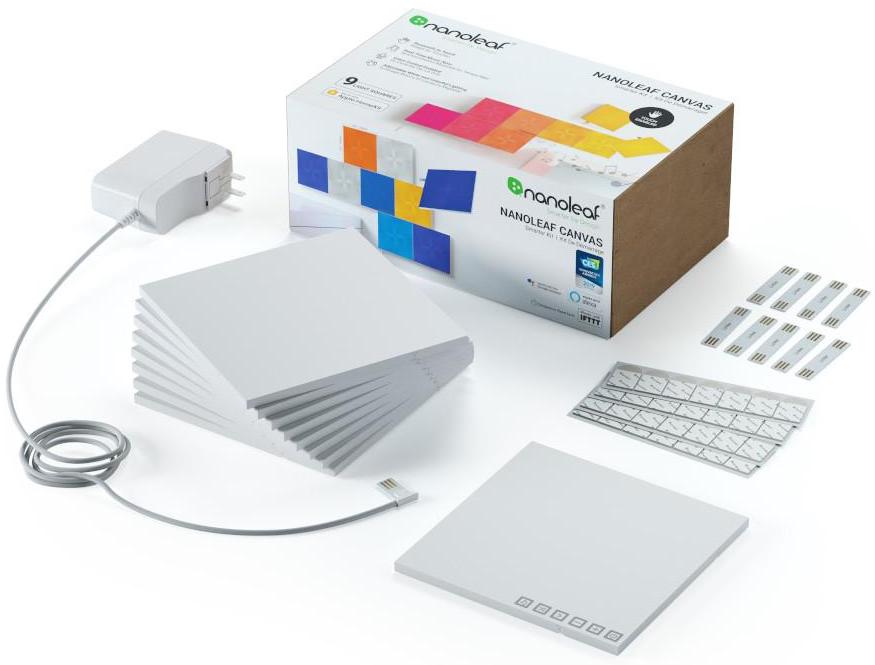
Nanoleaf Canvas are a fun way to bring flexible lighting to any room with a wall. Not only can you control these lights with an app and by voice, but also through touch.

